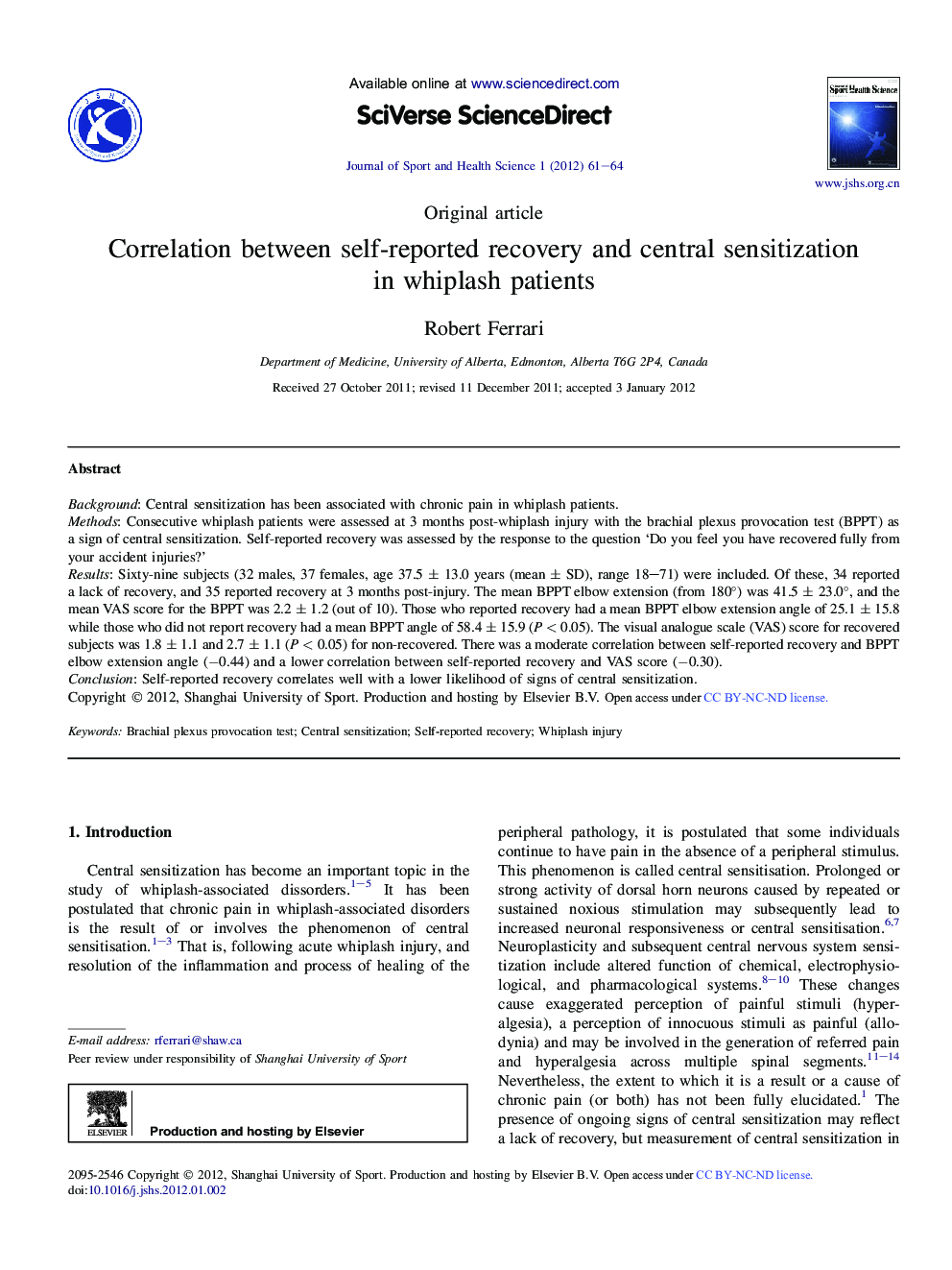| Article ID | Journal | Published Year | Pages | File Type |
|---|---|---|---|---|
| 1084270 | Journal of Sport and Health Science | 2012 | 4 Pages |
BackgroundCentral sensitization has been associated with chronic pain in whiplash patients.MethodsConsecutive whiplash patients were assessed at 3 months post-whiplash injury with the brachial plexus provocation test (BPPT) as a sign of central sensitization. Self-reported recovery was assessed by the response to the question ‘Do you feel you have recovered fully from your accident injuries?’ResultsSixty-nine subjects (32 males, 37 females, age 37.5 ± 13.0 years (mean ± SD), range 18–71) were included. Of these, 34 reported a lack of recovery, and 35 reported recovery at 3 months post-injury. The mean BPPT elbow extension (from 180°) was 41.5 ± 23.0°, and the mean VAS score for the BPPT was 2.2 ± 1.2 (out of 10). Those who reported recovery had a mean BPPT elbow extension angle of 25.1 ± 15.8 while those who did not report recovery had a mean BPPT angle of 58.4 ± 15.9 (P < 0.05). The visual analogue scale (VAS) score for recovered subjects was 1.8 ± 1.1 and 2.7 ± 1.1 (P < 0.05) for non-recovered. There was a moderate correlation between self-reported recovery and BPPT elbow extension angle (−0.44) and a lower correlation between self-reported recovery and VAS score (−0.30).ConclusionSelf-reported recovery correlates well with a lower likelihood of signs of central sensitization.
